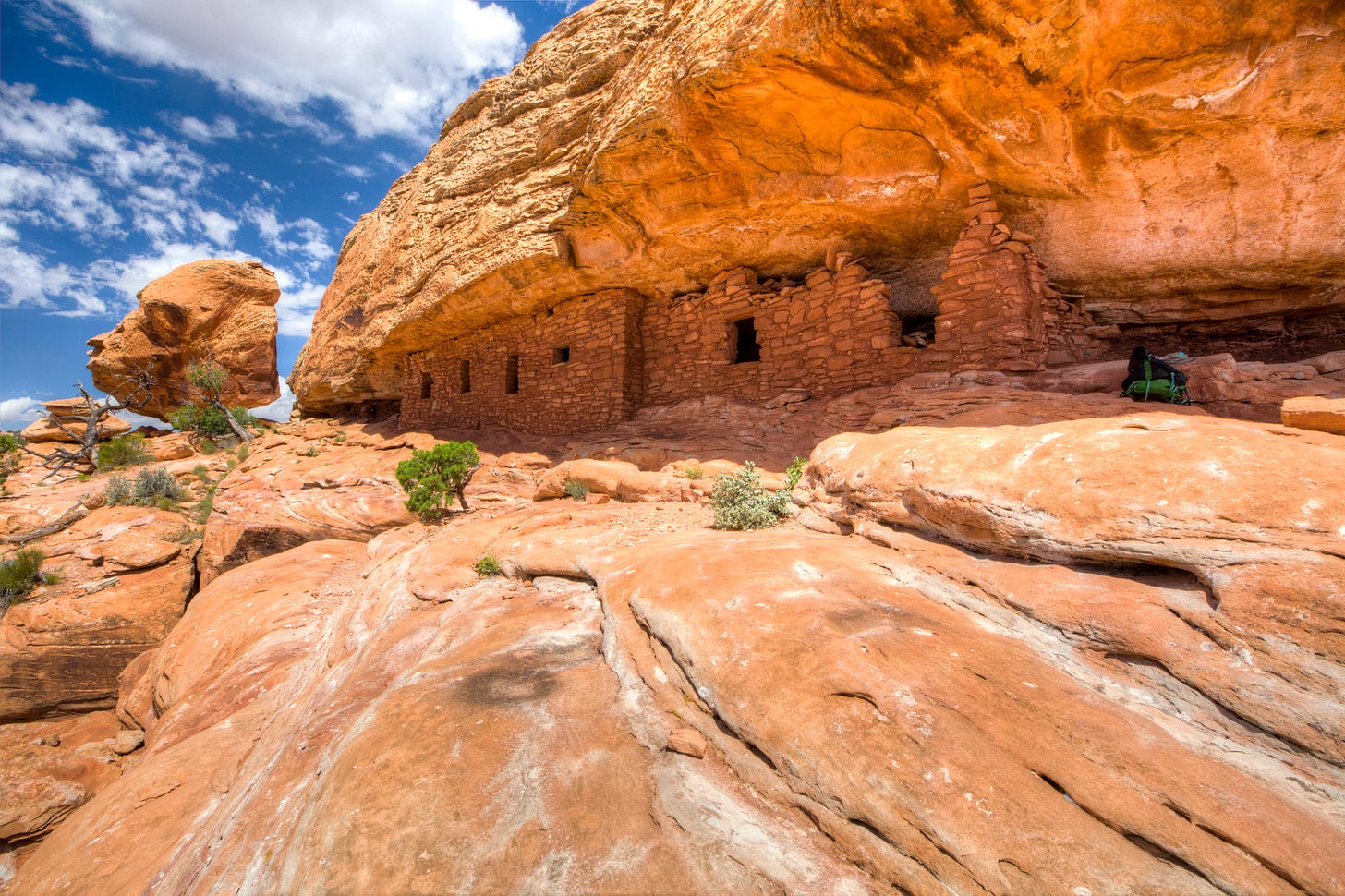Trump can abolish national monuments under the Antiquities Act, DOJ says
The Justice Department’s opinion puts protected lands at risk of oil and gas development.

Lawyers for the Trump administration have concluded that the president has the power to completely abolish national monuments designated by past presidents under the Antiquities Act, setting up a likely fierce legal fight over American public lands.
The memo released by the U.S. Department of Justice on Tuesday but dated May 27 reverses a 1938 legal opinion that has been cited to argue national monuments designations cannot be revoked by presidents once established.
The Trump administration has now concluded that the Antiquities Act allows the president to determine that national monuments “either never were or no longer are deserving of the Act’s protections” and can be eliminated “entirely” or reduced in size.
The DOJ didn’t immediately respond to a request for comment.
The new opinion sets the stage for President Donald Trump to try to reduce dozens of protected national monuments, including ones recently protected by former President Joe Biden.
The Washington Post has reported that the administration is considering shrinking six national monuments to allow for more mining and oil development.
A ‘rare’ legal opinion
Legal experts told Landmark that it is rare for the DOJ’s Office of Legal Counsel to reverse earlier opinions.
Jeff Beelaert, a partner at the law firm Givens Pursley who worked in the DOJ between early 2016 and 2021, said the new opinion recognized that presidents have on occasion adjusted the acreage of national monuments.
He said only Congress has outright abolished national monuments — and that the new opinion appears to put the Chuckwalla National Monument near Joshua Tree National Park and the Sáttítla Highlands National Monument in Northern California in jeopardy.
“It is a dramatic shift for the Department of Justice,” he said.
Susan Jane Brown, a lawyer at the law firm Silvix Resources, said the opinion “definitely runs headlong into uncharted – and legally dubious – territory, upending more than 100 years of jurisprudence.”
She called the memo “an existential threat to national monuments” that “threatens to make national monuments the ultimate political football, where administrations hostile to conservation abolish monuments only to have those actions reversed in subsequent administrations; and back again ad infinitum.”
Christine Ann Klein, a professor at the University of Florida Levin College of Law, said that the memo sets up a legal fight that will likely be decided, ultimately, by the U.S. Supreme Court.
“It seems likely that the current Supreme Court would uphold the administration's assertion that it can revoke monument designations,” Klein said.
She added, however, that there is a “wrinkle” since a strict textual reading of the Antiquities Act — in which Congress did not explicitly give the president authority to shrink or abolish national monuments — would not necessarily support the DOJ’s argument.
“It will be interesting to see whether the Court's textualism impulse or its broad executive authority impulse will prevail.”
A renewed effort to shrink public lands protections
Trump, during his first term, had sought to reduce the size of two Obama-era monuments in southern Utah — Bears Ears and Grand Staircase-Escalante — but was challenged in court.
Indigenous and environmental groups challenging the reductions argued the Antiquities Act doesn’t explicitly give presidents the power to reduce the size of national monuments, only to establish them.
That litigation was stayed after Trump lost the 2020 election and Biden took over the White House, meaning the legal strength of the new DOJ memo is largely untested.
More recently, in April, environmental groups sued to block Trump’s decision to open parts of the Pacific Remote Islands Marine National Monument to commercial fishing, which did not directly shrink that protected area.
Mark Squillace, a professor at the University of Colorado Law School, noted that “many of our most treasured parks” began as national monuments, including the Grand Canyon in Arizona, Zion in Utah, Olympic in Washington and Glacier Bay in Alaska.
“Perhaps more importantly, we should remember that these are public lands,” he said, which means that protecting the lands should be the government’s “management priority.”
“In this sense, doubts about the president's authority should be resolved in favor of protecting those resources,” he said, “because once they are gone, they are likely lost forever.”


